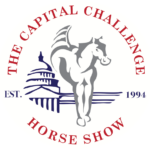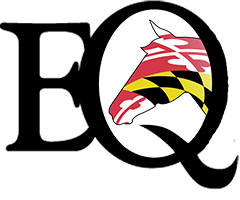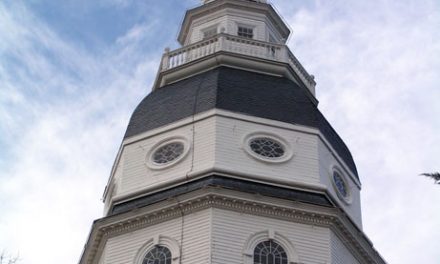 The Capital Challenge Horse Show: Surviving and Thriving During the Pandemic
The Capital Challenge Horse Show: Surviving and Thriving During the Pandemic
first published in the October 2021 Equiery
By Katherine O. Rizzo
Imagine 10 days during which riders from all over the country descend on Maryland, flooding the economy with a staggering $25 million worth of economic impact. From booked hotels and packed restaurants to supplies purchased from local vendors, the Capital Challenge Horse Show provides Maryland with a significant annual economic boost as well as providing the Hunter/Jumper world with the biggest horse show on the fall East Coast calendar.
In 2019, the show hosted 736 riders representing 49 states for a total of 1,133 entries. Over the course of the show, 43 division champions were crowned as well as 15 Grand Champions. Fifteen Leading Rider awards were handed out along with four National Medal Finals and 10 World Champion Hunter Rider National Champions. The 2019 show held an impressive 4,096 jump rounds.
In 2020, the Capital Challenge Horse Show was forced to move from its traditional home at the Prince George’s Equestrian Center to Ohio due to Prince George’s County COVID-19 pandemic restrictions. But this year, it is back at PGEC and is bigger than ever.
In the Beginning…
The Capital Challenge Horse Show was the brainchild of then show managers Oliver Kennedy and Billy Glass. “We had a show up at the Columbia Horse Center but it wasn’t doing all that great,” Kennedy remarked. “The barn could do better making money from lessons so we were looking for a place to move the show.”
Right around the same time, Kennedy, a Maryland-native, got wind of a new equestrian center being built in Prince George’s County. “We immediately contacted them and held our first show there in December 1993,” Kennedy said. That first show was also the first event ever held at the newly constructed Prince George’s Equestrian Center (PGEC).
The following year, the show was shifted to September with the intent of being a preview competition for the fall indoor circuit and was run over six days. “We thought we would just be a good prep for the fall indoors, but now we are the biggest show on the fall circuit,” Kennedy added.
Over the years, the show has grown and is currently run over 10 days with Kennedy as the sole show manager. Twenty-eight years later, this year’s show runs October 1-10 and is shaping up to be a big one. “We have the biggest wait list we have ever had,” said Kennedy. “We currently have over 1,600 entries and will probably run about 1,400.”
All About the Riders
With over 700 riders from all over the country competing each year, the competition at this show tends to be fierce. “We always have amazing competition,” Kennedy remarked, adding, “Riders say it’s the hardest show in the country to win at because of the level of competition. Scoring an 84 somewhere else often gets you the win but at our show, that might only be seventh place because of the level of competition.”
Riders such as Carleton Brooks of Balmoral Farm in West Los Angeles, CA, have high regard for Capital Challenge, returning year after year with several horses and clients. Brooks, who is also a coach, clinician, trainer and rated judge, said, “it is the prestige of competing there that brings us back each year. The best of the best are there with the top [riders] fighting it out.”
Brooks typically brings 10-15 horses from California for the East Coast competition circuit, with Capital Challenge being the first stop. “I like to think of it as the ‘Triple Crown’ of show hunters with Capital Challenge, Harrisburg, and Washington International,” he said. This year however, Brooks is skipping the Washington International Horse Show and heading to Kentucky instead after the Pennsylvania Horse Show. “We love Washington when it’s in D.C…. there is nothing like competing in the city like that… but we are going to Kentucky instead of Tryon this year.”
Brooks added that competing in the indoor at PGEC is important to his training methods for its “coliseum feel.” He explained, “The coliseum setting is really important for the industry as we are losing a lot of great indoors like that.”
Pandemic Pandemonium
While most of the country had shut down early in 2020 due to the COVID-19 pandemic, it was looking like the Capital Challenge Horse Show could be held at PGEC in the Fall, under COVID-19 safety guidelines. Then on August 17, 2020, the show organizers announced that it would be moved to the World Equestrian Center in Ohio due to “Prince George’s County Parks Department’s tightened regulations surrounding the COVID-19 pandemic and its decision to decrease the number of horses allowed at the facility.”
Kennedy reported that his team had only four weeks to pack up everything from Maryland and get set up in Ohio. “Just pulling off the show last year was a huge feat,” he said. “I don’t know how we pulled it off. It’s a testament to how good our staff is.”
The pandemic also forced the cancellation of the Pennsylvania National Horse Show in Harrisburg, which moved the North American League Jumper Finals to Capital Challenge in Ohio. “The NAL finals [people] seem to like us so they will be part of this year’s show too,” Kennedy stated.
The pandemic has not finished wreaking havoc for 2021, as Kennedy is finding his normal supply chain crunched. “Rippeon Equipment has been part of the show nearly since day one and they supply our tractors for the show but they are having a hard time finding anything for us to use,” Kennedy explained. “Tractors are in short supply and we are having a hard time finding any to rent either.”
The ongoing pandemic is not going to slow Kennedy and his team down, however, as they put the finishing touches on the set up of this year’s show.
Soldiering On
One of the reasons PGEC is so well-suited for a horse show this large is because of the number of rings they have available. Kennedy reports that during Equitation Weekend, there will be three competition rings going at once as well as two warm up areas. “The covered arena is primarily used for under saddle classes that weekend and then warm up for less busy days,” he said.
Another key asset of PEGC is the number of permanent stalls and the ample room for temporary stabling. “We have used Brandywine Tent Company since the beginning,” Kennedy explained, adding that around 1,000 horses and ponies are stabled on the grounds during the show.
Vendors have been invited back to PGEC this year with nearly 100% of the show’s pre-pandemic vendors returning for 2021. “We will have vendors set up outside and inside and everyone is to follow the county’s COVID protocols,” Kennedy stated. These protocols include limiting the number of customers in booths and wearing face masks when indoors. “Plus there is all the standard stuff about self monitoring temperatures and such,” he added.
Even though this year’s show is shaping up to be business as usual, Kennedy is surprised at how big the show has become during the pandemic. “I’m shocked… with everything that is going on in the world this year… it is just crazy how many people want to come to the show,” he said while getting a bit choked up. “I’m super grateful that [the riders] like us. Not sure what it is about this show… but I’m just so very grateful.”












